Have you ever seen a snail or two in your garden before? It is very common for gardeners to find snails and other small animals around their plants.
Are garden snails dangerous?
Most garden snails will destroy your plants by eating their leaves, flowers, and other parts. Some snails also carry some harmful parasites that can infect, you, your kids, and pets. There are, however, some benefits of having snails in your garden.

Table of Contents
Snails in Your Garden: Good or Bad Idea?
Snails are animals under the phylum Mollusca. Snails and slugs are in the same genus: Gastropoda.
The major and most observable difference between snails and slugs is their possession of shells (though there are some snails without shells).
Fun Fact: Snails and other animals such as octopuses and squids are in the same phylum.
Snails are nocturnal. As nocturnal animals, snails are more active at night.
This means that when you are searching for pests in your garden during the day, you may not find snails destroying your plants.
When you wake up in the morning and return to the garden, however, you might see some destroyed leaves and plants.
Dangers of Snails in Your Garden
Here are the major negative factors from having snails in your garden.
1. Damage to Plants
Snails are not just nocturnal; they are scavengers with an herbivorous preference. This means that they prefer plant products such as leaves, fruits, and flowers.
Unfortunately for your garden, snails love eating garden plants.
Snails prefer eating the leaves of plants that produce sweet fruits but will eat anything from the leaves of a papaya tree to grass leaves.
This means that the more sweet crops you grow in your garden, the more snails will be attracted to your garden.
2. Damage to Flowers
The flowers of plants have nectar that is rich in sugar. This nectar attracts snails, and the snails will eat the flowers.
Without flowers, your plant cannot produce fruits, so snails can prevent plants from producing fruits.
3. Dangerous to Your Pets
Garden snails are hosts of a parasite called Angiostrongylus vasorum that is known to cause lungworm infections in dogs.
Snails can also possess a similar parasite species called Aerlurostrongylus abstrusus that infests the lungs of cats.
While adult dogs and cats will not eat snails, puppies and kittens can be experimental and eat raw snails out of curiosity.
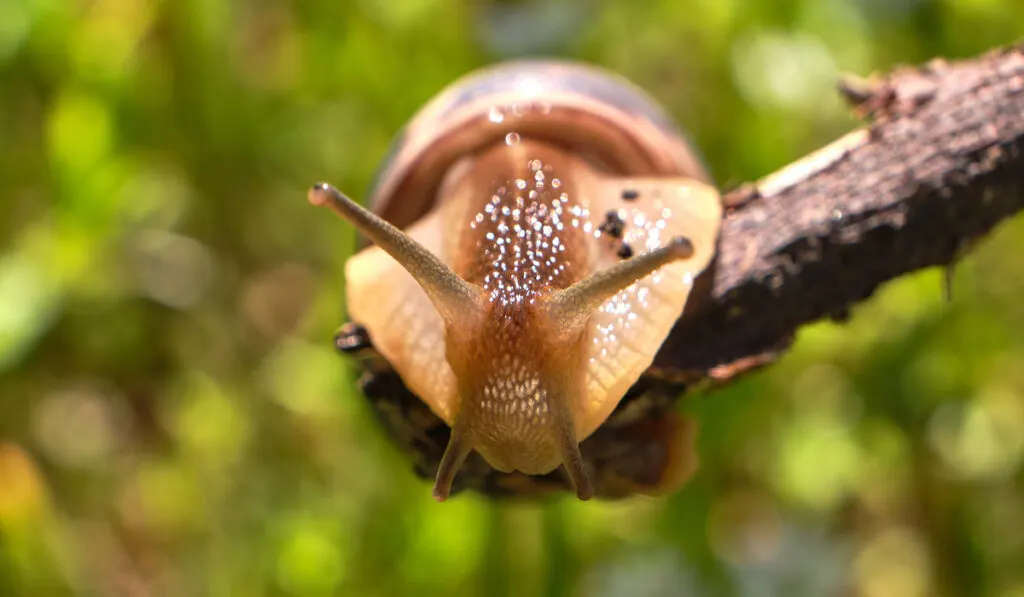
4. Dangerous to You and Your Kids
There is a parasite called the Rat Lungworm (Angiostrongylus costaricensis) that can be transmitted to humans by snails and rats.
While this parasite infects the lung of rats, it can travel to the human brain and cause injuries (that can be minor or major according to how many parasites are consumed).
This parasite is easily transmitted from infected snails to humans when the snails are eaten raw. Make sure that your kids do not eat raw snails from the garden.
Benefits of Snails in the Garden
Here are some of the benefits of having snails in your garden:
1. Consumption of Decaying Materials
Snails love eating decaying materials, so when snails are in your garden, you will find fewer items that can be an eyesore.
In consuming decaying materials, snails help to reduce the amount of time spent in decomposition.
2. Cleaning Services as Scavengers
Since snails are scavengers, they are always in search of different kinds of foods. Snails eat leaves, fruits, weak or dead snails, and even feces (yes, even their own).
If your plants shed leaves or an animal poops in your garden, snails will help consume the material and clean up after them (and themselves).
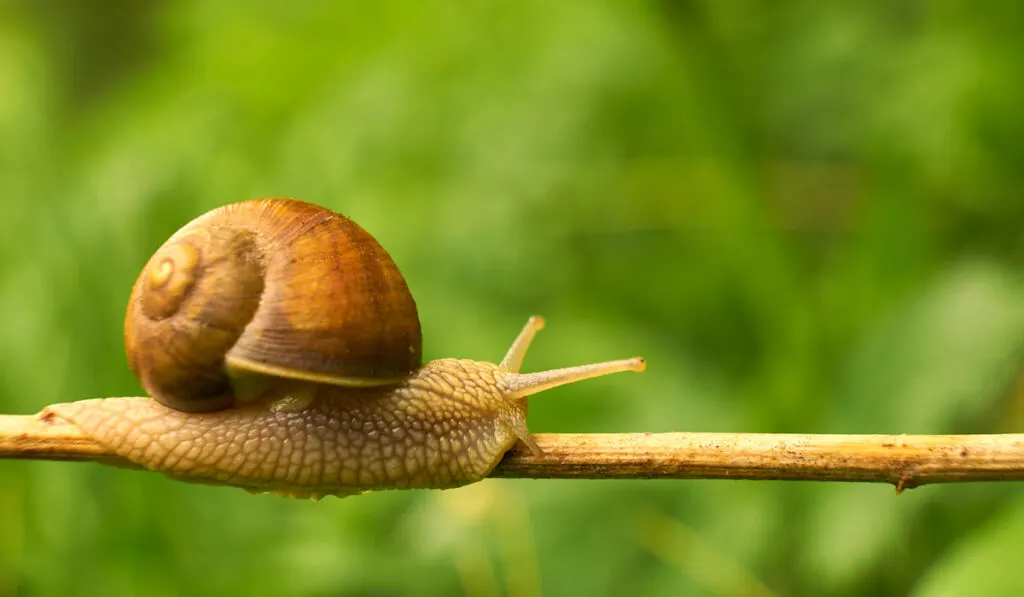
3. Nutrient Cycling
When snails eat plants and materials in your garden, they excrete nutrient-rich feces.
Snail feces is also easy to breakdown, so decomposers such as bacteria and fungi and easily act on it and release nutrients back to your plants.
4. Soil Aeration
Snails love eating (and therefore digging) nutrient-rich soil. They love digging soil in search of calcium.
This behavior is common in African Giant Snails. Some snail species dig holes in the soil to lay and bury their eggs.
When snails dig holes in the soil, they allow oxygen to reach the roots of your plants.
5. Source of Food
It is very common to eat African Giant Snails. In fact, African Giant Snails are the most expensive meat in many countries in West Africa where they originate.
If you decide to try eating the snails in your garden, make sure that you wash and cook (best to fry) the meat.
6. Use in Fun Garden Folklore
According to garden folklores, people study snails to forecast the weather in the past. According to the folklore:
- Slugs burying deep into the ground signify a coming drought.
- Black snails crossing your path signify black clouds with high rainfall.
- Slugs burying deep into the ground in the fall signify that winter is close.
- Snails climbing to the highest branches of trees signify the coming of a hot weather.
Types of Common Garden Snails
1. Garden Snail (Cornu aspersum)
Also called the European Brown Garden Snail, this snail is the most common snail you will find in your garden.
It is notable for its yellow or cream shell with brown stripes. These snails are very dangerous to your plants.
2. African Giant Snail (Achatina spp.)
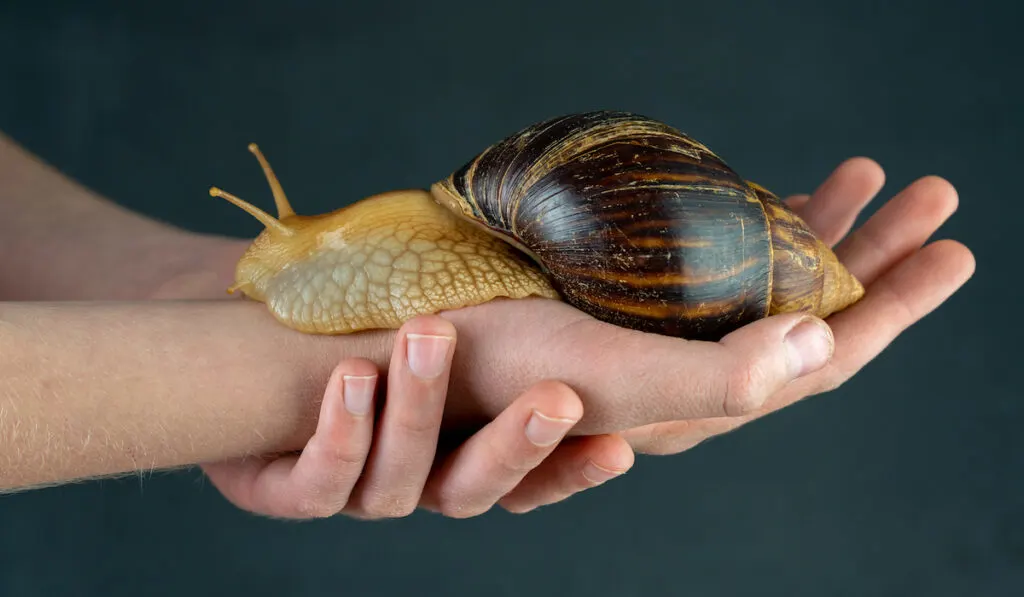
The African Giant Snail is a genus of snails that grow to be 8 inches long (or more). These snails are very invasive and happily eat more than 500 kinds of plants.
They can also live in places outside their habitat, so they pose a great threat to crops. You can recognize them by their large lightly-colored brown shell with dark brown stripes.
3. Roman Snail (Helix pomatia)
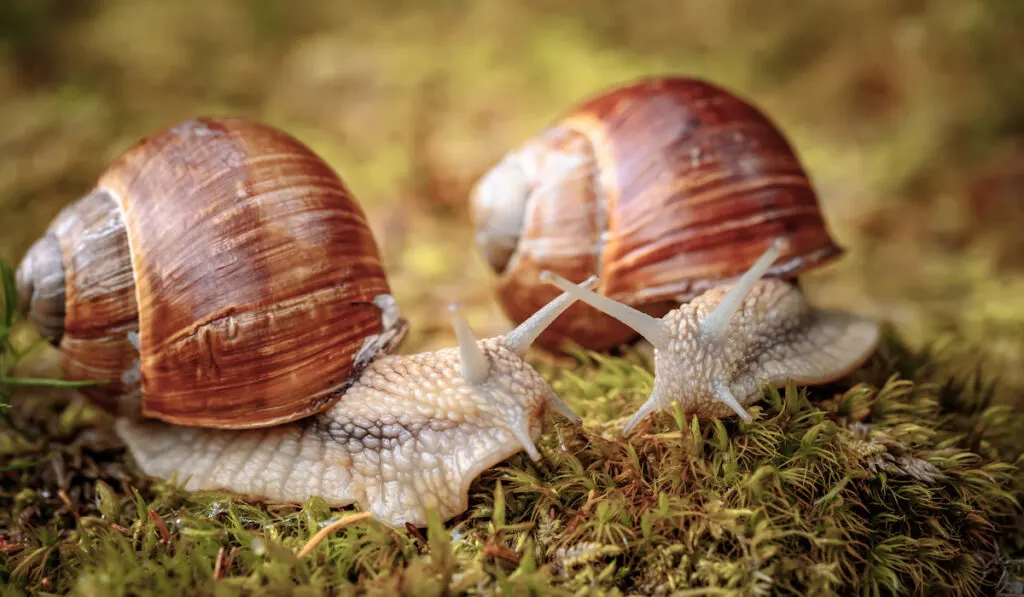
These snails look like garden snails but are larger and less slimy. They are disastrous to plants just like other snails. Their shells are light brown and they have dark brown stripes.
How to Repel or Control the Population of Garden Snails
If you do not want too many snails in your garden, here are some ways to control their population.
1. Deter with Salt
Salt quickly dehydrates snails. You have to be very careful when using salt because salt can also burn your plants (by dehydrating them.)
Salt is a very good option if you have potted plants. Spread salt on the saucer of the potted plant.
If you must use salt for regular garden plants, spread the salt on a tarp or any similar material (like a weed fabric) around the base of your garden plants.
If you ever notice the leaves of your plants burning (from their edge) when you use salt, remove the salt and flood the plants with water.
2. Trap Using Snail Bait
This is a very simple technique to trap and kill snails. Remember that snails love and are attracted by sugary substances.
Pour beer into several buckets and place the buckets on strategic locations in the garden. At night, snails will crawl into the bucket and drown in the beer.
Note that you have to replace the beer after a few days. Remember to remove every dead snail from the bucket.
3. Plant Snail-Repellant Crops
There are quite a few plants that snails will not only not eat but will actually be repelled by naturally. Adding these to your garden can beautify your plantings and repel snails at the same time.
Some plants that you should add to your garden for this purpose include:
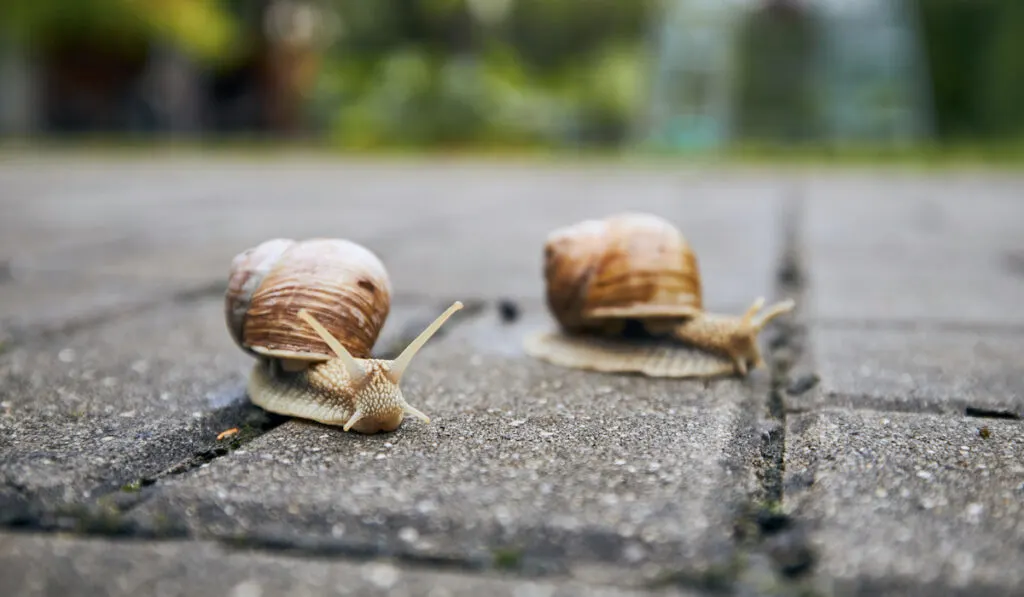
- Garlic
- Chives
- Parsley
- Onions
- Cilantro
- lambs ear
- Rosemary
- Various ferns
- Japanese Anemone
4. Use Predators
Some snail predators are lizards and a snail species called Decollate snails. While lizards will be in your garden by themselves, you can get decollate snails from a plant nursery shop.
5. Manually Hand-Pick the Snails
Go to the garden very early in the morning before dawn and try to hand-pick the snails. You can usually find multiple snails at the same place.
If there is a pile of fresh leaves in the garden, check that area for more snails to pick.
6. Use Scratchy Materials
Scratchy materials such as sand, eggshells, and diatomaceous earth can be effective in repelling some snails. These materials are safe to use around your plants. Just spread them around the base of your plants.
7. Provide a Snail Shade
At dawn, snails will crawl to places where direct sunlight cannot reach them. If you install any object in your garden that can block sunlight, snails will crawl under the object at dawn. In this case, you can find the snails and hand-pick them here during the day.
Note that you will need a week or two for the snails to notice and get comfortable with the shady object.
Final Thoughts
Snails can be both harmful and beneficial to your garden. There methods to cut down on how many you have in and around your plants. And remember to make sure you never allow your kids or pets around them to play with or ingest.
Sources
- https://www.pest-control-products.net/3007/slug-snail/good-or-bad/amp/
- https://www.gardeningknowhow.com/plant-problems/pests/insects/organic-snail-control.htm
- https://www.pe.com/2012/03/30/master-gardener-good-snails-vs-bad-snails/
- https://nayturr.com/types-of-snails/
- https://bugwiz.com/snails-potted-plants/
